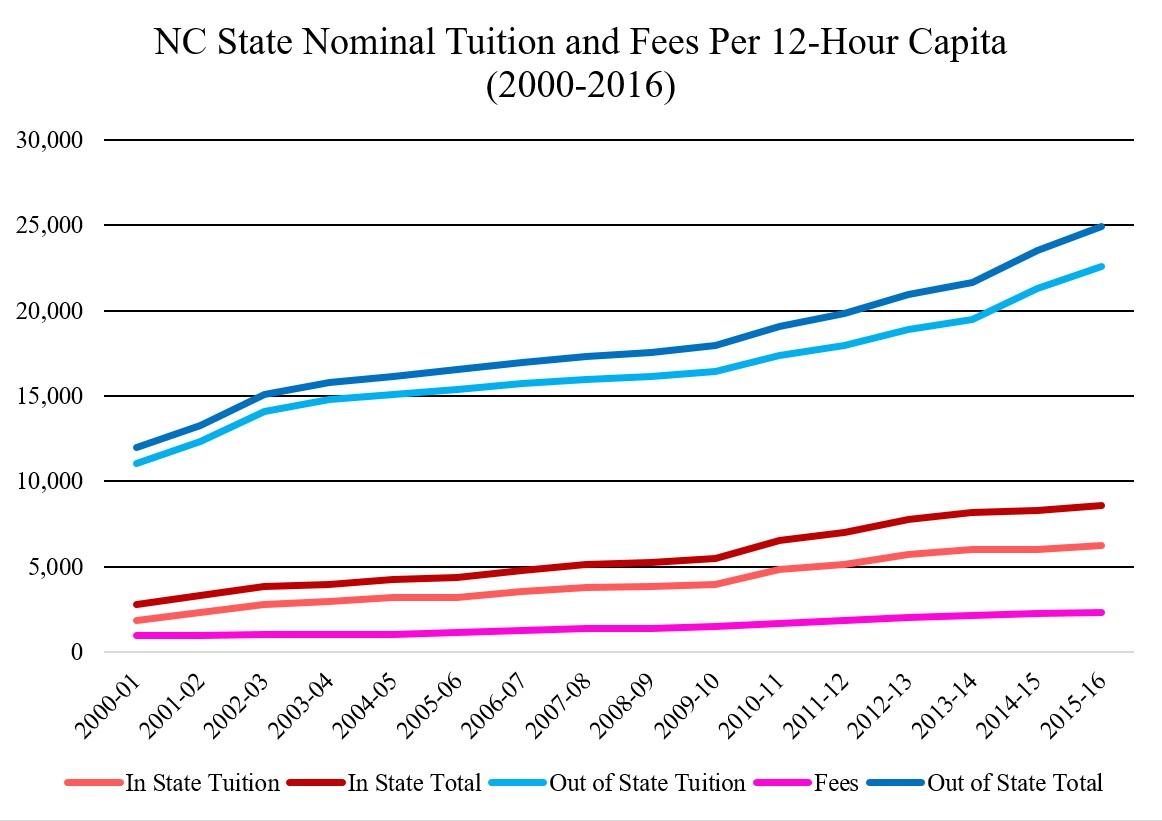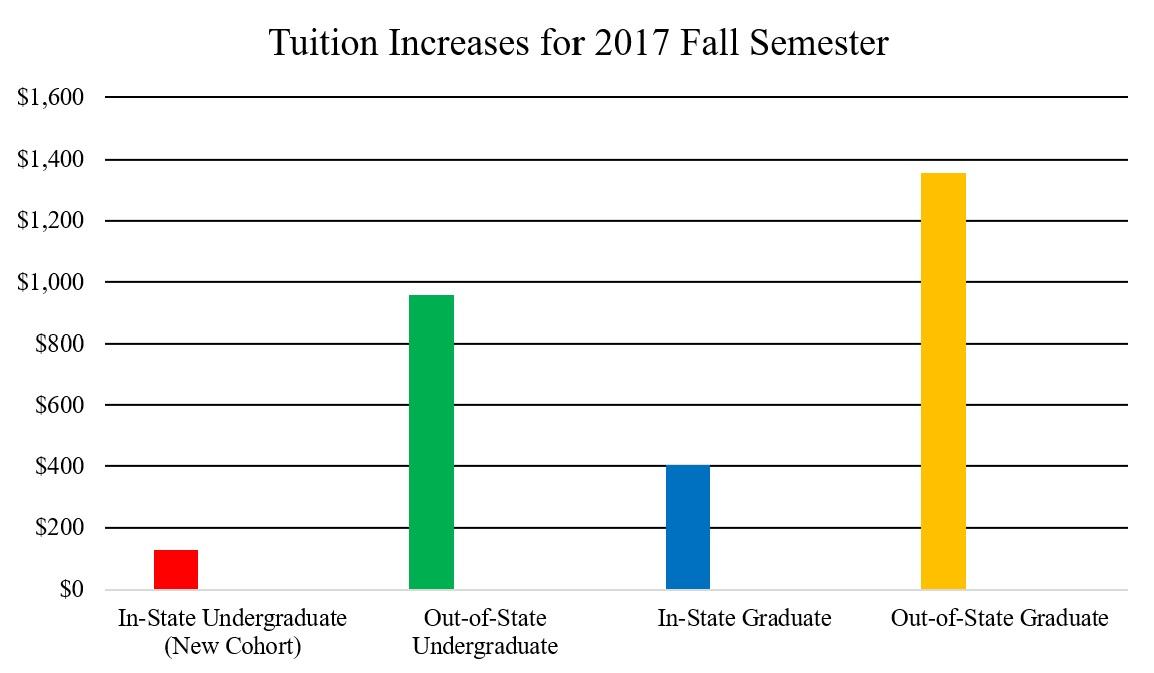Despite the UNC-System Fixed Tuition Program’s optimistic goal of lowering tuition cost, fixed-rate tuition prices for in-state students will grow for incoming freshmen.
The Fixed Tuition Program’s philosophy is to encourage students to graduate on time, within their appropriate 8-10 semester undergraduate program in order to avoid further increasing their tuition costs. Unlike other flat-rate tuition programs, fixed tuition rates are dependent upon the number of credit hours taken by each student.
When classes began last fall, in-state students’ tuition was frozen in the hopes of lowering tuition-based costs. The plan was part of NC General Assembly Senate Bill 873, designated to fix tuition and fee rates at public, four-year universities; the General Assembly defined fixed tuition and fees as constant or decreasing in cost over 8 to 10 semesters, depending on a student’s undergraduate degree path. For an NC State University student to qualify for fixed tuition and fees, they would have to be a returning undergraduate student, according to Paul Nolan, a senior studying materials science and engineering and political science, as well as the NC State student body president and co-chair of the Tuition Review Advisory Committee (TRAC).
Aside from returning, in-state students, NC State students can expect tuition to continue increasing in the 2017-18 academic year. During the fall semester, Nolan created an expository tuition and fee increase page to illustrate recent changes in tuition.
“To my knowledge, the past sessions of [Student Government] have never included tuition and fee increase information on the SG website,” Nolan said. “I found that shocking, so I hope our SG Administration will set this as a precedent.”
Tuition increases at NC State must fall under an increase cap, previously 5 percent.
“The 5 percent rule or cap is from the Board of Governors,” said TRAC co-chair and NC State Provost Warwick Arden. “What they do every four years is have a four-year tuition plan and that usually says that over the next four years, the increase in in-state undergraduate tuition cannot exceed a certain percentage.”
Increasing University Revenues
Although the future of the increase cap remains uncertain as state officials arrange budgets around fixed-tuition prices, the cap will continue for another four-year sequence, allowing for continued increases in undergraduate tuition for in-state students, according to Arden.
“This year, the Board of Governors lowered that cap from 5 percent to 2 percent,” Arden said. “As a result, we’re only allowed to apply increases to incoming in-state undergraduate students and only up to 2 percent.”
Following the 2017 fall tuition increases, NC State University will receive $8,476,158 in revenue, according to Board of Trustees materials from November 2016. The document specifies that additional revenue will be allocated between improving instruction, faculty salary increases and the Graduate Student Support Plan.
The Graduate Student Support Plan, granted $2,116,300, will hold a larger pool of competitive financial aid to be provided to graduate students, primarily doctoral students, according to Nolan. Nolan added that faculty salaries as a whole will receive an additional $750,000 of new tuition revenues. Given the remaining $5,609,858, the university will increase the number of teaching assistants and seats per classroom, according to Nolan.
Students’ Bottom Line
Despite the continuing increases in tuition costs, students should not expect any increase in the amount of need-based financial aid provided by tuition revenues.
“The Board of Governors limited UNC System Schools to a 15 percent allocation for need-based financial aid,” Nolan said. “We’re above that right now, so we can’t allocate more money to it.”
The 15 percent ceiling on need-based financial aid was unanimously signed by the Board of Governors in August 2014, preventing UNC System universities from further increasing the percent of tuition revenues used toward need-based financial aid. Since then, NC State has not been able to allot any additional tuition revenues toward need-based financial aid given that its 2014 percent allocation was 16 percent, according to Arden.
“With regards to need-based financial aid, that is going to continue to be important to us,” Arden said. “You’ve got to remember that need-based financial aid has different funding resources. Each year, we raise campus-initiated tuition receipts, raising total revenues a little bit, so we will eventually come below that 16 percent limit and be able to put more tuition revenues toward need-based financial aid.”
Wherever the future of tuition for in-state tuition for incoming, undergraduate freshmen may lie, the rising cost of tuition will certainly not be barred by fixed, four to five-year pricing. Thus, the effects of fixed tuition plan on the cost of public higher education are yet to be fully analyzed and understood in North Carolina.









